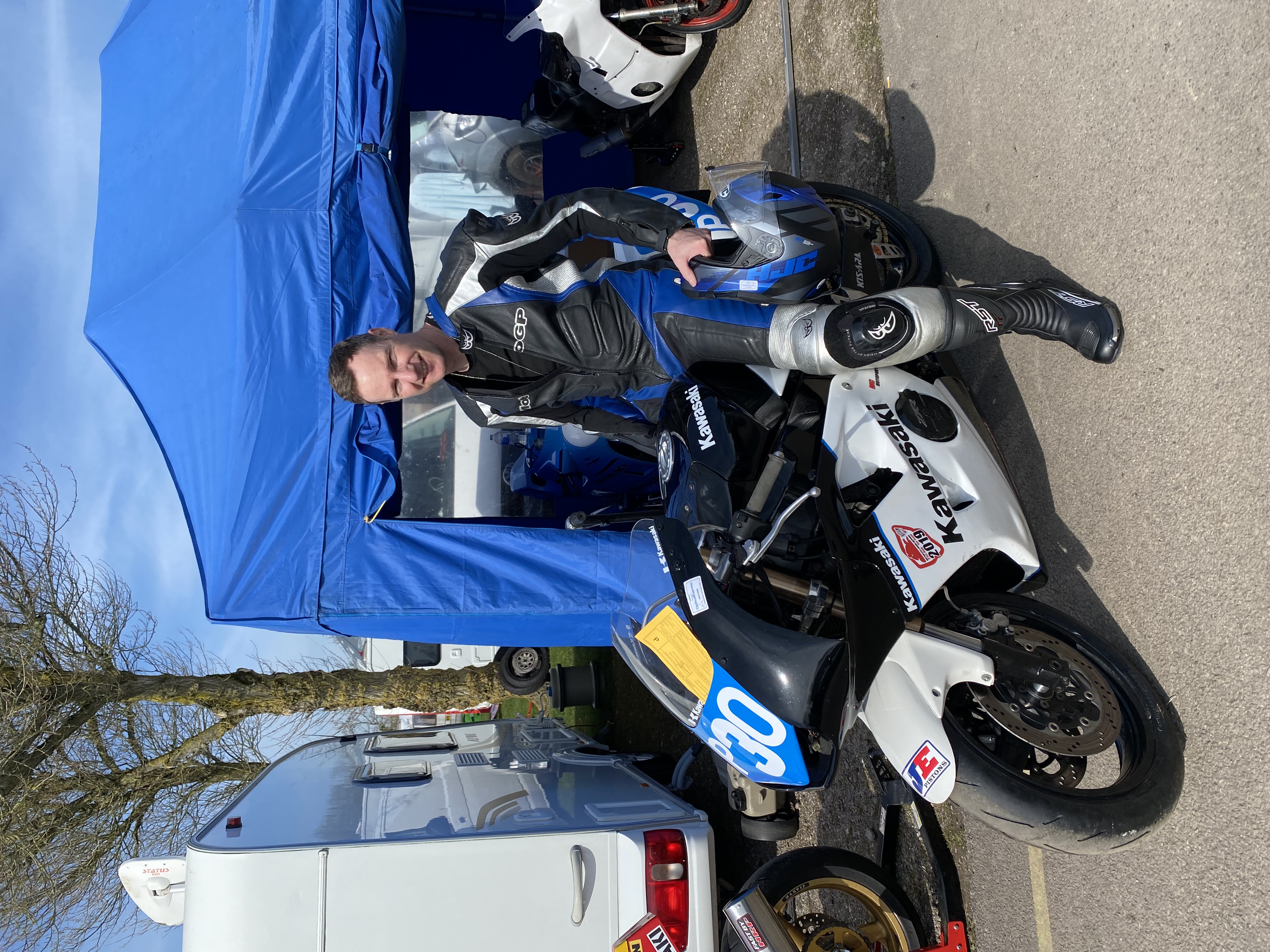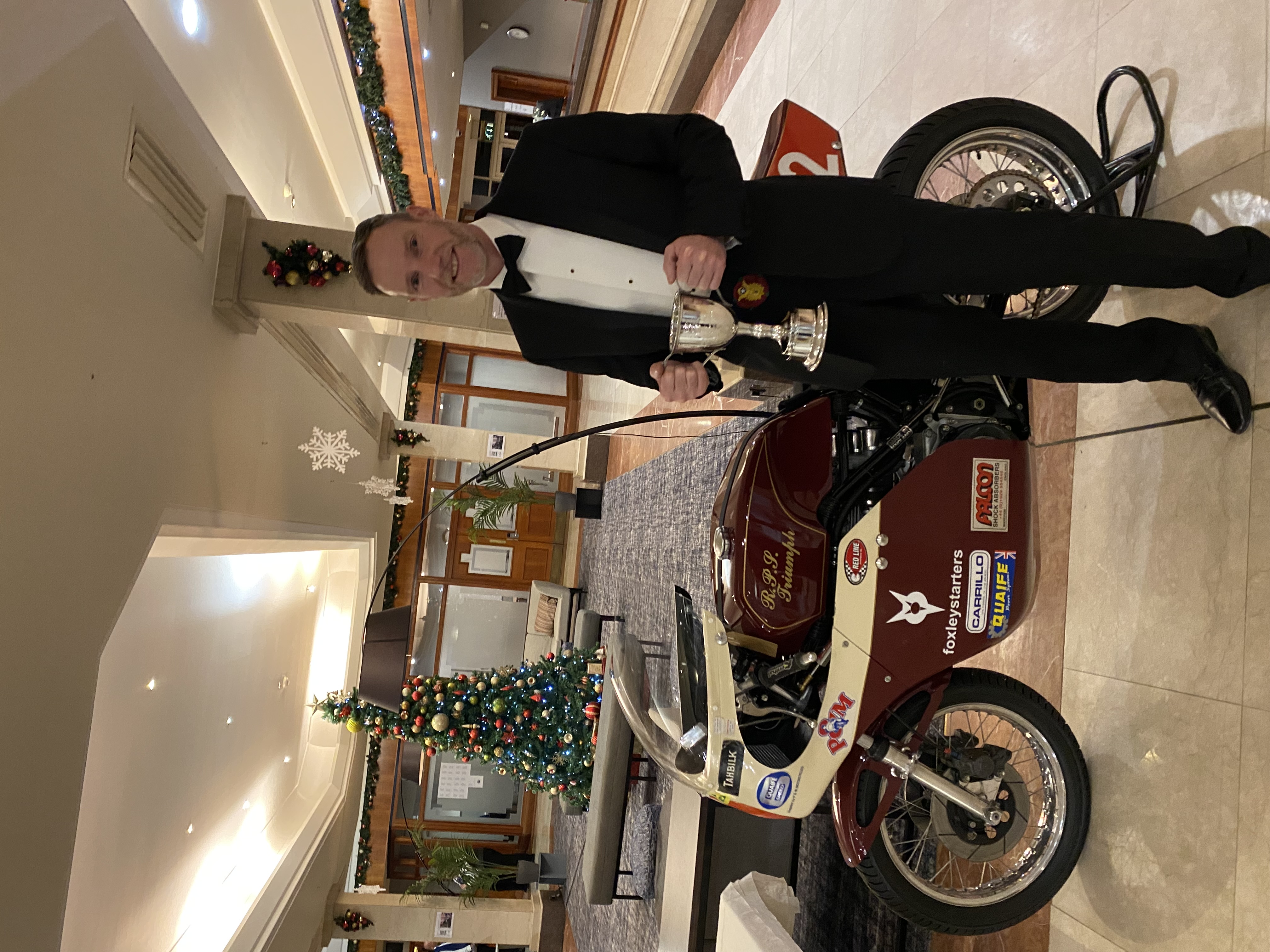How to go classic bike racing
So you want to have a crack at classic bike racing...
Then be prepared for sheer terror: not the racing - the anticipation. Humans don't like going into the unknown, and the grid before a bike race is about as hair-raisingly unknown as it gets for a novice racer. But such is the focus once the lights go out that terror at least takes a pillion seat.
If you're of a certain age - and if we're talking classic bikes, then quite a few of us probably are - then you'll be familiar with the 1980s TV series "Quantum Leap", in which Scott Bakula's character Dr Sam Beckett was bounced around time suddenly being dropped into the bodies and lives of a variety of characters from schoolboy basketball player to pilot, and all sorts in between, but on each occasion in the instant before major decision or imminent disaster.
It's probably a bit like the moment somebody suggests you should go classic bike racing.

Such are the angles available to TV companies broadcasting motorcycle races that the words "go bike racing" quite likely flash an image in your mind of the first corner after the start of a Moto GP race from a bike's onboard camera: Marc Marquez torpedoing you up the inside, forcing you into an aero-parts crunching coming-together with Peco Bagnaia on your outside, with Enea Bastianini's front wheel rubbing your elbow and Jorge Martin giving you the hurry-up by putting his handlebar into a space already occupied by your footpeg, all with bits of carbon fibre flying through the air, cold brakes and tyres, elbows and glares from the hardest of hard men down the length of the 200mph back straight. In the rain.
But in your first classic bike race you'll have what amounts to a cross between an invisibility cloak and an Ironman suit: an ultra uncool hi-vis novice's waistcoat which might as well be labelled "I'm a rolling roadblock, please be nice". So don't be telling anybody you're a racer until ten races into your season, when you're allowed to reveal your race leathers, and exude your inner Giacomo Agostini.

We spoke to a 2023 novice, David Oldham, to get the first-hand view on what it takes to get on the grid, and, more importantly, to the chequered flag.
David, 52, a project manager, has been riding bikes since he was nine. He had no intention of going classic bike racing until he bumped into a former Royal Navy colleague, Steve Cross, who was already racing, unknown to David. David was intrigued enough to go along as "race support" (tea-making, pumping up tyres...), until the inevitable word-bomb landed: "you should go racing," said his friend.
It was a Quantum Leap moment.
Eighteen months later, David is preparing his 1991 Kawasaki ZXR400 for the 2024 Classic Motorcycle Racing Club's season having completed five of the seven 2023 race season weekends, generally finishing around 10th place. He'll be in the 400cc production class again.
"I'll be brutally honest: at the time I didn't want to race. I was quite happy being in the pits as a spectator. I thought I'd like to do some track days, but as I spent more and more weekends there, and talking to the guys, I came to realise that actually what I really wanted to do was experience the thrill of racing, not just track days," he said.
David followed the CMRC's guide to starting racing - https://www.crmc.co.uk/info/start-racing/ - which included a competitor training course covering safety, which flags meant what, a basic riding assessment, and medical & eyesight checks. The courses cost around £150, and his race licence itself £75.
He found his bike on ebay; it had been part-prepared by somebody who'd been racing but decided to hang up his helmet.
The ZXR400 cost £1,800 and needed around £1,000 spent to get it ready for the 2023 season including a second pair of wheels - so he had both "dry" and "wet" tyres, although in each case they're road tyres, whether biased towards dry or wet public highway use, as per production racing rules.
Helmet cost around £200, second-hand race leathers £85, new boots £200, new gloves £100, and each weekend's racing between £500 and £1,000 depending upon circuit location, but including race entry fee, as well as wear and tear on the ZXR.
Each race is around seven or eight laps, so around 15 minutes, and there's generally four races per weekend plus a practice/qualifying session.
"The adrenaline is pumping, the concentration levels are insane, far more than you concentrate any other time on a on a bike. And a race doesn't seem very long at all - and it's over in a flash," he added.
But that consistent 10th-to-12th race placing earned him a trophy: Second place in the CMRC Novice Riders Championship.

There's several classes, from production to pukka out-and-out race bikes, but all classics, and usually simple and relatively inexpensive to maintain, ride and race. The CMRC lists those classes here: https://www.crmc.co.uk/info/eligibility/
So whether your preference is ring-a-ding-ding two-strokes, thrrrbbbbb-burrrrpp-p-p four strokes, howling, wailing, thumping or ear-splitting racers, there's likely a way into classic racing for most of us. Are you interested?
The information contained in this blog post is based on sources that we believe are reliable and should be understood as general information only. It is not intended to be taken as advice with respect to any specific or individual situation and cannot be relied upon as such. Before you hit the track, make sure you check your insurance policy wording to make sure you’re covered.

COMMENT